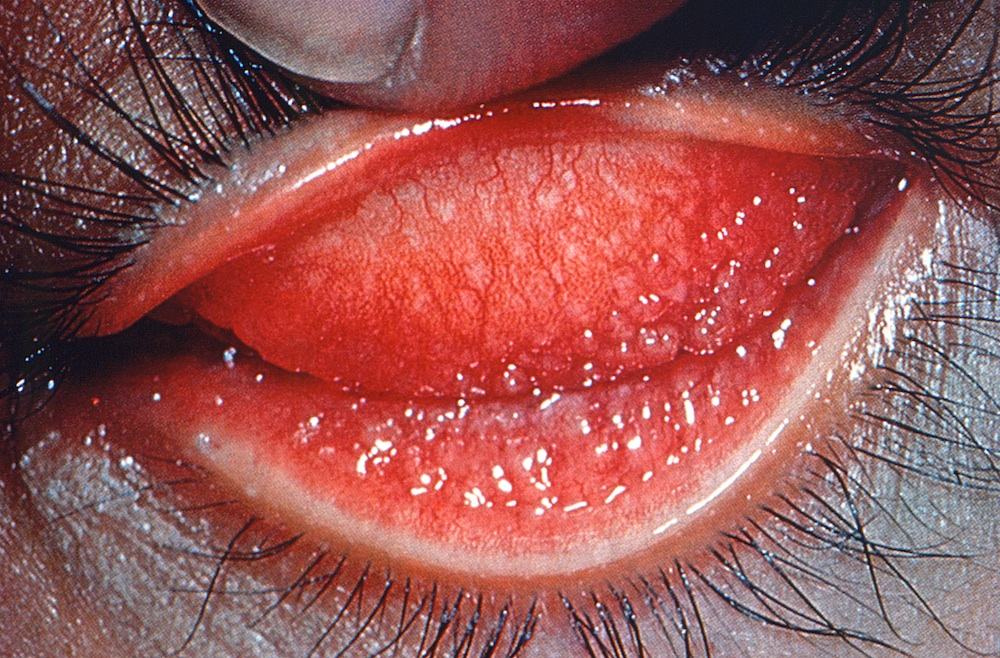Roman-Era 'Cosmetics' May Have Treated Eye Chlamydia

Roman-era toiletry sets consisting of tweezers, scrapers and other artifacts have long been interpreted as beauty aids. But it's possible the tools had a more gruesome use: to treat a type of Chlamydia that infects the eye.
The tools are found across Great Britain and date back to around A.D. 43 to A.D. 410, a time when much of the island was under Roman control. They do bear resemblance to modern-day cosmetic kits, but they're also similar to tools used in folk treatments of trachoma, the leading cause of preventable blindness around the world today, said Wendy Morrison, a researcher at the Institute of Archaeology at the University of Oxford.
"Trachoma is a disease which has plagued humans for millennia," Morrison told LiveScience. "We have ethnographic examples from modern Africa and historical examples from ancient India that show utensils, such as tweezers and rasps, were used to pluck in-turned eyelashes and to scour away the afflicted eyelids." [The 9 Most Bizarre Medical Conditions]
It's possible, Morrison said, that Roman-era Britons were doing the same.
Beauty or blindness?
The tool kits in question typically consist of tweezers; small spoons, possibly used for the removal of earwax; fingernail cleaners; files; probes; and grinders that may have been used to crush substances to make cosmetics. The kits are often found with loops for hanging, Morrison said.
Morrison's hunch that the kits may have had a purpose other than (or in addition to) beauty popped up when she saw an online ad for Sightsavers, an international charity that aims to prevent blindness. One of the group's major nemeses is trachoma, an eye infection caused by the bacteria Chlamydia trachomatis, which is related to the bacteria that causes the sexually transmitted disease Chlamydia.
Get the world’s most fascinating discoveries delivered straight to your inbox.
Trachoma roughens the inner surface of the eyelid and causes the eyelashes to turn inward. The eyelids and eyelashes can then scrape the cornea, causing scratching and, eventually, blindness. If sufferers leave the condition untreated, they often tweeze out their eyelashes in hopes of temporary relief.
A Sightsavers image of a Kenyan woman wearing tweezers around her neck first inspired Morrison to investigate the tool kits further. Trachoma has been infecting humans since prehistory, with evidence of the disease found on the bones of Australians dating to 12000 B.C. The disease, or one very much like it, was also present in Roman-era Britain, Morrison said. Researchers investigating a 2,000-year-old Roman shipwreck reported in January that they'd found medical tablets,possibly used for the treatment of eye diseases.
"Putting the two strains of evidence together produces a plausible narrative and helps us think a bit more about what ancient daily lifewas like, rather than just envisioning people wanting clean fingernails and regular brows," Morrison said.
Looking for evidence
Morrison envisions distinctly non-beauty-related uses for the grooming-kit tools — for instance, tweezers to pluck inwardly turned eyelashes, and nail cleaners to scrape rough growths off the inside of the eyelids. "Cosmetics grinders" could have been used to crush up medicinal herbs and other substances to make salves to sooth eyelid pain. And earwax scoops could have been used to apply those salves.
For now, this interpretation is just a guess. So far, no one has been able to unearth a cosmetics grinder with testable material still clinging to it. If archaeologists were to find something like that, they might be able to determine what, exactly, Roman-era Britons were grinding up. A discovery like that, or of a newly translated text referring to the objects, could strengthen the trachoma theory.
"I won't be holding my breath," Morrison said.
Still, Morrison said she hopes to explore the kits further in the future. Trachoma thrives in certain conditions, so if grooming kits are found to be more common in trachoma-friendly areas, that finding may support the idea that the grooming kits were used to treat eye disease. Morrison published her theory in the May issue of the Oxford Journal of Archaeology.
"In archaeology, we are always only dealing with part of the story," Morrison said. Trying to find the best fit for the evidence at hand, "has the exciting effect of meaning that the next piece of evidence unearthed could radically change our understanding," she said. "Archaeologists need to be flexible!"
Follow Stephanie Pappas on Twitter and Google+. Follow us @livescience, Facebook & Google+. Original article on LiveScience.com.

Stephanie Pappas is a contributing writer for Live Science, covering topics ranging from geoscience to archaeology to the human brain and behavior. She was previously a senior writer for Live Science but is now a freelancer based in Denver, Colorado, and regularly contributes to Scientific American and The Monitor, the monthly magazine of the American Psychological Association. Stephanie received a bachelor's degree in psychology from the University of South Carolina and a graduate certificate in science communication from the University of California, Santa Cruz.
 Live Science Plus
Live Science Plus






